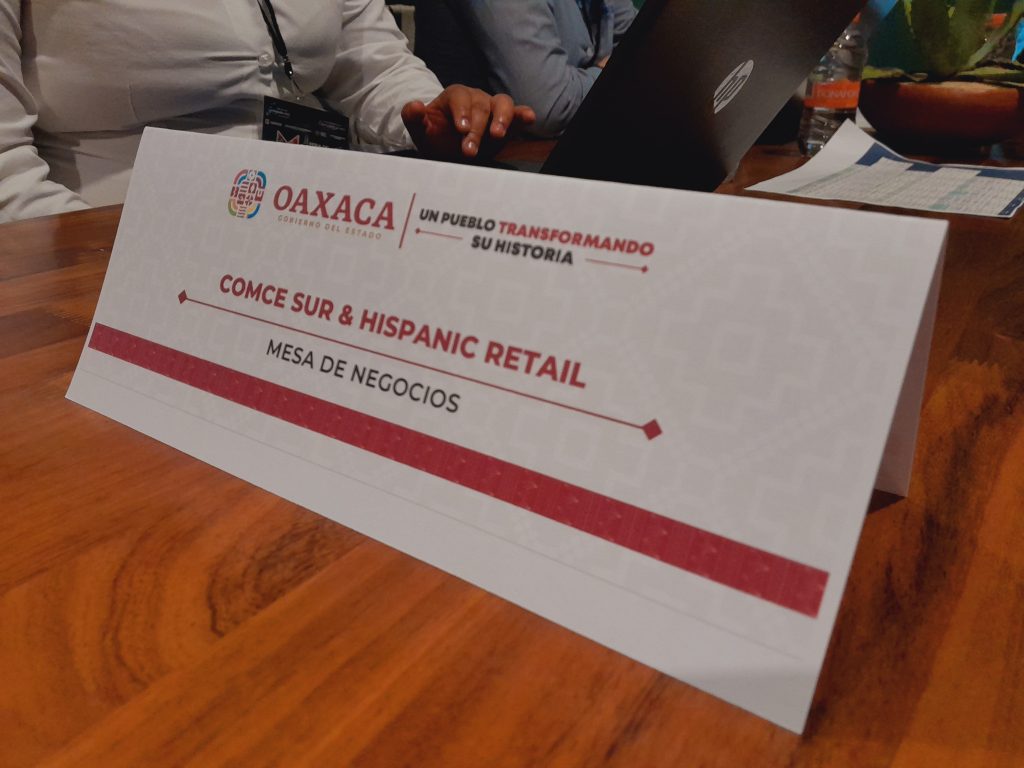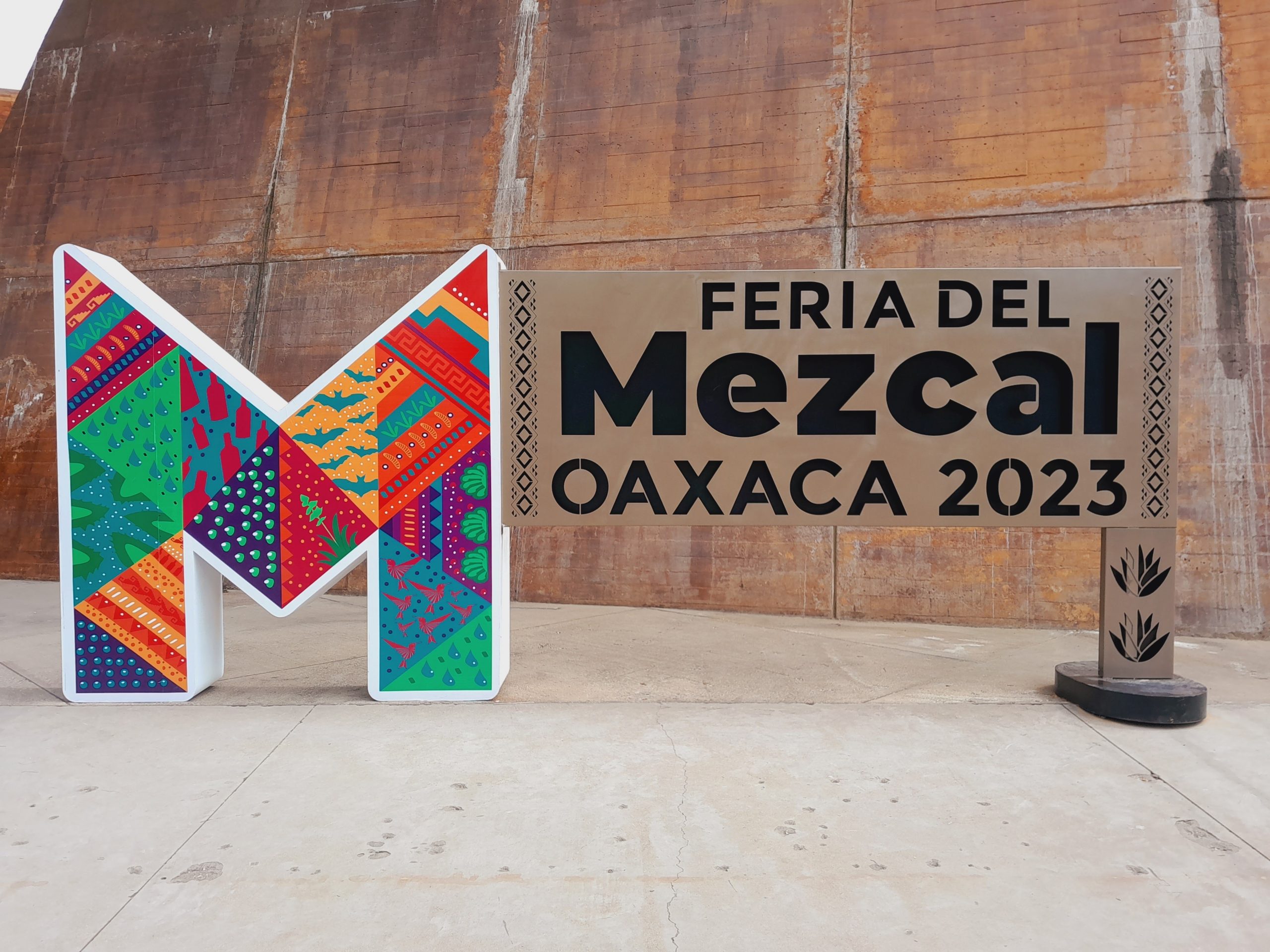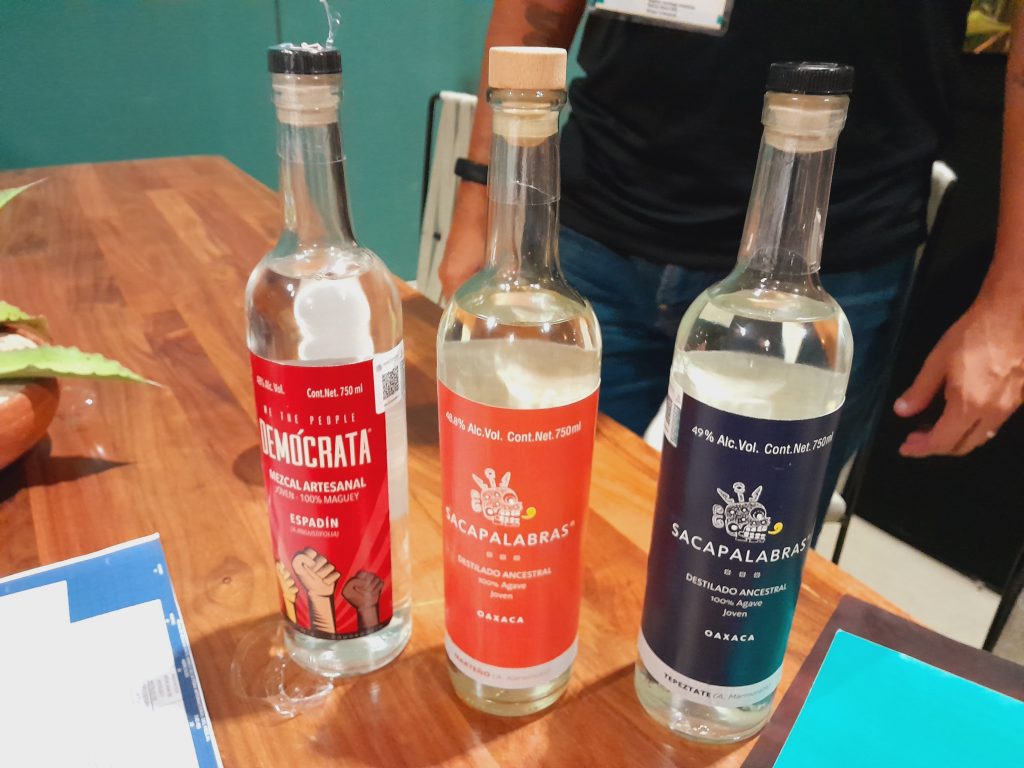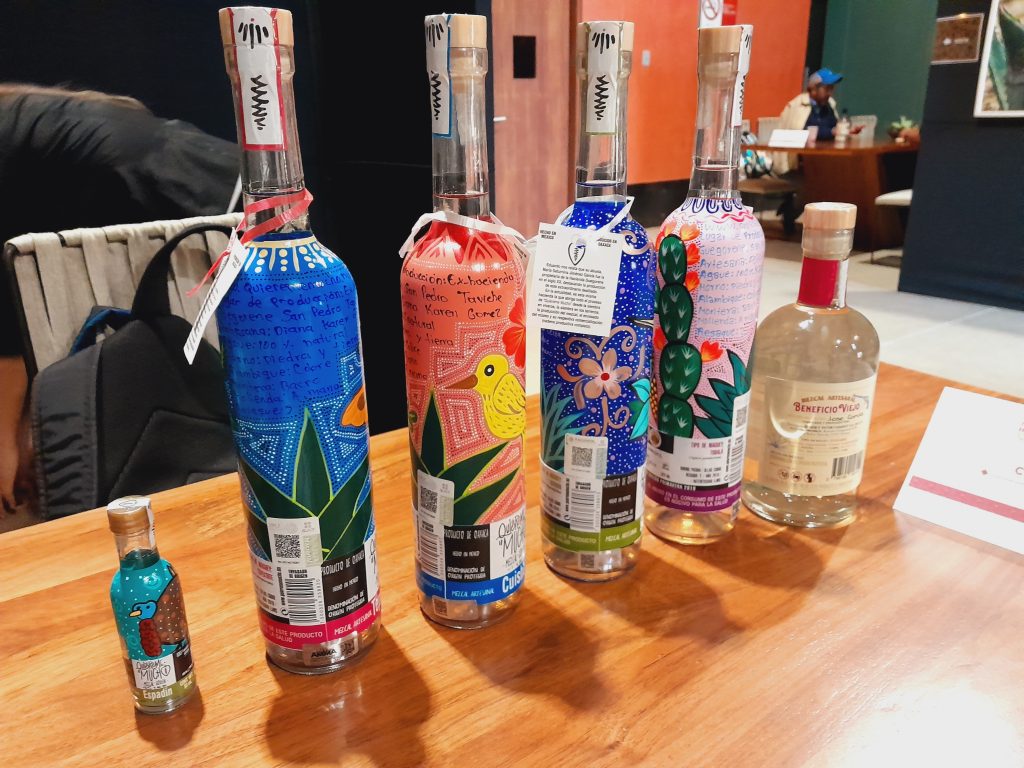Today, the Mezcal Fair is being held in Oaxaca, an event organized by the Economic Development Secretariat. COMCE SUR and The Hispanic Retail Chamber of Commerce are present, where they collaborate in business meetings.
We would like to express our special gratitude to the Secretary of Economic Development, Raúl Ruiz Robles, and the Undersecretary of Commerce and Investment Attraction, Íñigo Arturo Aragón García.

Mezcal, along with tequila, is one of the most well-known drinks in Mexico. It is made from the fermentation and distillation of the agave plant.
Mezcal is one of the most popular Mexican drinks in the world, and has become increasingly popular in recent years. It is made from the distillation of a plant, also from Mexico, called agave or maguey.
 While mezcal is directly associated with Mexico, the origin of the word agave is Greek, and means noble or illustrious, although it is a plant that has been cultivated in Mesoamerica for over 9000 years, for different uses such as medicinal or food, as well as to produce fiber for the manufacture of clothing.
While mezcal is directly associated with Mexico, the origin of the word agave is Greek, and means noble or illustrious, although it is a plant that has been cultivated in Mesoamerica for over 9000 years, for different uses such as medicinal or food, as well as to produce fiber for the manufacture of clothing.

Mezcal, as an alcoholic beverage, comes from the areas of Oaxaca and Guerrero, where indigenous tribes produced it in an artisanal way and used it for their special celebrations. According to experts, mezcal was traditionally consumed by nobles and prominent figures, and after the Spanish colonization, it began to be taken as a type of wine.
The alcohol content of this drink actually varies depending on the type of mezcal. However, it can have at least 35% to 55% alcohol, which makes it a drink with a very high alcohol content.
The first thing to know about the taste of mezcal is that it is very strong, not only because of its high alcohol content but also because the distillation process that produces this drink is done on roasted agaves, which gives it a smoky flavor, which can be more or less intense depending on the variety.
It is always best to consume artisanal mezcal, as in that market we can find a wider variety of flavors, which can range from the mildest to the most intense, depending on the type of soil where the agave was grown.
Both the flavor and the variety of mezcal are determined by the type of agave that is used to produce the drink, as it is a plant that can be cultivated or can grow wild.
The types of agave with which mezcal can be made are tobalá, espadín and madrecuixe, which can in turn be subjected to three different types of production: the traditional way, without any electronic device; the process called pechuga, as a turkey or rabbit breast is literally introduced into the barrel where the drink is distilled; and the abocado production, which uses other natural ingredients, such as seeds, flowers and even worms.

 Mezcal Blanco or Joven
Mezcal Blanco or Joven
This type of mezcal is characterized by being colorless, so much so that it can be easily confused with water. It is produced with espadín agave, and comes directly from the distillation process.
Aged Mezcal in Glass
As its name suggests, it is a variety that takes some time to mature. In general, it is left to rest for approximately 12 months, in glass containers and in dark and low-temperature places, such as a cellar underground or a specially prepared basement.
Reposado Mezcal
This type of mezcal is also kept for a while before being consumed (between 2 and 12 months at most), but instead of being stored in glass, bottles or wooden barrels are used, especially oak wood.
Aged Mezcal
Aged mezcal is another of the variants that needs a break, which can last up to three years. The main difference with reposado mezcal is that it is stored in containers with a capacity of at least 1000 liters, that is, it rests in large quantities.
Abocado Mezcal (flavored)
This variety of mezcal actually must be accompanied by the particular flavor with which the drink has been refined. Whenever we talk about abocado mezcal, we must clarify with which other ingredient the drink has been made, such as lemon, orange, worm of maguey, herbs, among others.
Mezcal Categories
In addition to the classes of mezcal that we have just described, mezcal can be classified according to the production processes, which we will describe in more detail below. For this, it is important to know that according to the cooking, grinding, fermentation and distillation of the agave, the raw material that is used to make this alcoholic beverage, mezcal can be industrial, artisanal or ancestral.
- Mezcal or Mezcal Industrial
The production process of industrial mezcal is characterized by the cooking of the heads or juices of agave in pit ovens, by a grinding that can be called tahona, trapiche or desgarradora, which is carried out with a Chilean or Egyptian mill or with a mill train or diffuser; by a type of fermentation that is made in wooden containers or stainless steel tanks; and by a distillation made with continuous copper or steel distillers.
- Mezcal Artesanal
Mezcal artisanal, on the other hand, meets the same cooking and grinding requirements as industrial mezcal, but the fermentation is different, since it is made in wooden or clay cavities, or also in animal skins or even with the fiber that is extracted from the agave. The distillation process can also be made in copper or stainless steel boilers, as well as in clay pots.
- Mezcal Ancestral
This type of preparation makes the mezcal obtained one of the most valuable that can be found on the market. For this, ancestral mezcal must follow the same cooking and grinding processes as artisanal mezcal, and even industrial mezcal, but the fermentation is made in stone cavities, in masonry pools or in a wooden or clay container. The distillation needs direct fire on a clay pot or wooden montera, and must also have agave fiber.














